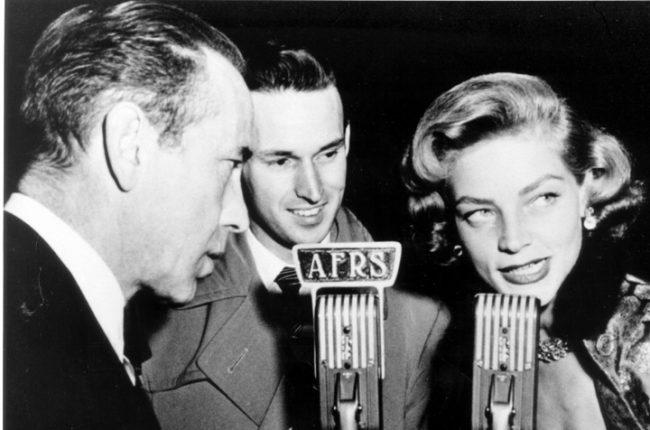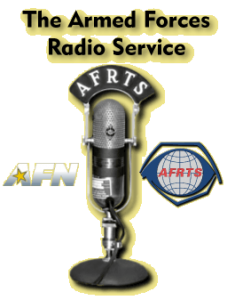 I remember the first time, many years ago, when I first tuned to the American Forces Network (AFN) on my shortwave radio. I was scanning the bands and happened upon a fairly strong single sideband broadcast. When I tuned in the signal I heard National Public Radio (NPR), a largely domestic public broadcaster here in the US. I thought, perhaps, it was some strange, temporary relay of that news broadcaster. But after hanging around on the frequency for a while, I heard other news sources, and finally the station ID: “This is the American Forces Network.”
I remember the first time, many years ago, when I first tuned to the American Forces Network (AFN) on my shortwave radio. I was scanning the bands and happened upon a fairly strong single sideband broadcast. When I tuned in the signal I heard National Public Radio (NPR), a largely domestic public broadcaster here in the US. I thought, perhaps, it was some strange, temporary relay of that news broadcaster. But after hanging around on the frequency for a while, I heard other news sources, and finally the station ID: “This is the American Forces Network.”
The American Forces Network (AFN), in case you’re not familiar with it, is the brand name used by the US Armed Forces American Forces Radio and Television Service (AFRTS) for its entertainment and its command internal information networks worldwide. The primary mission of the AFN is to serve American service men and women, the Department of Defense, and other US government civilians and families stationed at bases around the world, as well as on U.S. Navy ships at sea. The AFN broadcasts a wide array of American radio and television programs from the major U.S. networks.
Though the AFN doesn’t broadcast at power levels typically associated with international broadcasters, their broadcasts span the globe. How? By broadcasting in single sideband instead of AM.
What’s available over AFN radio?
Wikipedia offers a nice breakdown:
AFN […] offers a variety of radio programming over its various frequencies throughout the world. Not only is there local programming (with military disc jockeys), but there is satellite programming, as well. Music programming spans Classic Rock, Rhythmic R&B, Jack FM, Techno/Trance and country music. Ryan Seacrest‘s AT 40, The Rick Dees’ Weekly Top 40 and the American Country Countdown with Kix Brooks are broadcast weekly over AFN Radio. In addition to music, AFN broadcasts syndicated talk radio programs such as Car Talk, Kidd Kraddick in the Morning, Kim Komando,The Rush Limbaugh Show, The Motley Fool Radio Show, A Prairie Home Companion, Doug Stephan,Titillating Sports with Rick Tittle, Sports Overnight America, and other programs form a variety of sources. Weekly religious programming is offered to AFN stations via closed-circuit.
On December 5, 2005, liberal/progressive Ed Schultz and conservative talk show host Sean Hannity were added to the radio programs provided by the AFN Broadcast Center to its affiliate stations. Liberal Alan Colmes rounds out the political talk lineup on The Voice channel.
On April 24, 2006, AFN Europe launched AFN The Eagle, a virtually 24-hour-a-day radio service format initially modeled after “Jack FM” but most recently a “Hot AC” format. This replaced ZFM, which had more of a CHR flavor. When the Eagle was launched AFN Europe took control of what local DJs could play.
Altogether, AFN produces 12 general-use streams for AFN stations to use. Of these, seven are music-based, two are sports-based, and three general news/talk channels, including The Voice, which features live play-by-play of American sports (it’s also the one heard on shortwave, if the shortwave radio has Single sideband (also known as SSB) installed). How these stations use these formats is up to them. These formats are:
- Hot AC (mainstream hits and yesterday’s favorites)
- The Nerve (new rock)
- TrancePort (trance/techno)
- Today’s Best Country (country/western)
- Gravity (urban rhythmic)
- AFN Legacy – Deep Classic Rock Gems
- MAX FM (80, 90’s)
- The Voice (News, Talk and Information)
- AFN Clutch (sports programming from ESPN and Yahoo Sports Radio)
- AFN Fans (sports programming from FOX Sports Radio and Sports Byline USA)
- Power Talk (liberal and conservative talk programming)
- NPR (public radio programs from NPR and others)
The AFN is available on numerous FM relays around the world (basically, most places where US forces are stationed) and also via satellite. But, of course, you can find them on your shortwave dial as long as you have SSB. Note that reception will be much better if you have an external antenna–Navy ships, who primarily use the AFN on SW, have excellent receiving equipment. To hear the AFN reliably on a portable radio, especially if you don’t live within the footprint of their target broadcast area, you will be at the mercy of propagation.
Shortwave Frequencies (note: all broadcasts are in USB)
- Diego Garcia:
- 12,579 kHz daytime
- 4,319 kHz nighttime
- Guam:
- 13,362 kHz daytime
- 5,765 kHz nighttime
- Key West, Florida: Decommissioned – See post
12,133.5 kHz day & night7,811.0 kHz day & night5,446.5 kHz day & night
It’s worth noting that the AFN previously operated a station in Pearl Harbor, Hawaii, but they have it listed as out of service for an indefinite period.
Want to hear a sample of an AFN broadcast? The following clips were recorded between 11:00-13:00 UTC today, via their transmitters in Diego Garcia and Key West:





 Due to budget cuts, the American Forces Network (AFRTS) has decommissioned their Key West, Florida SW frequencies of: 5446, 7811, 12133 kHz
Due to budget cuts, the American Forces Network (AFRTS) has decommissioned their Key West, Florida SW frequencies of: 5446, 7811, 12133 kHz